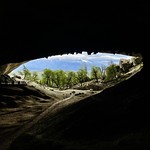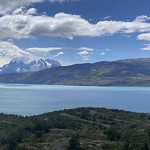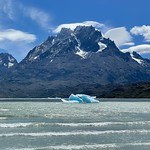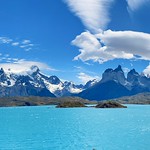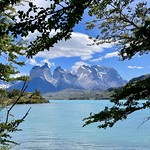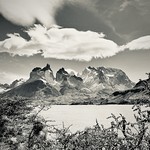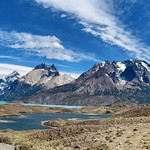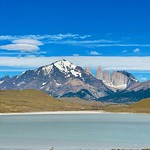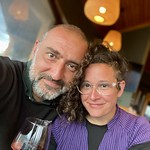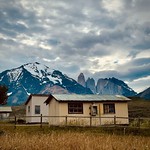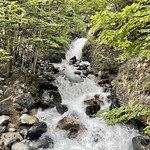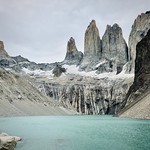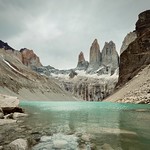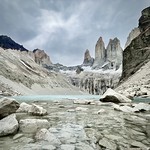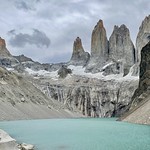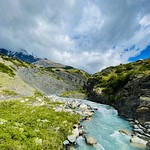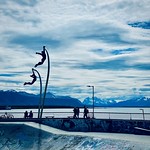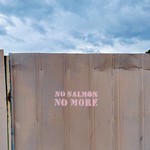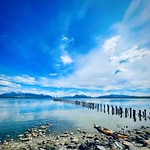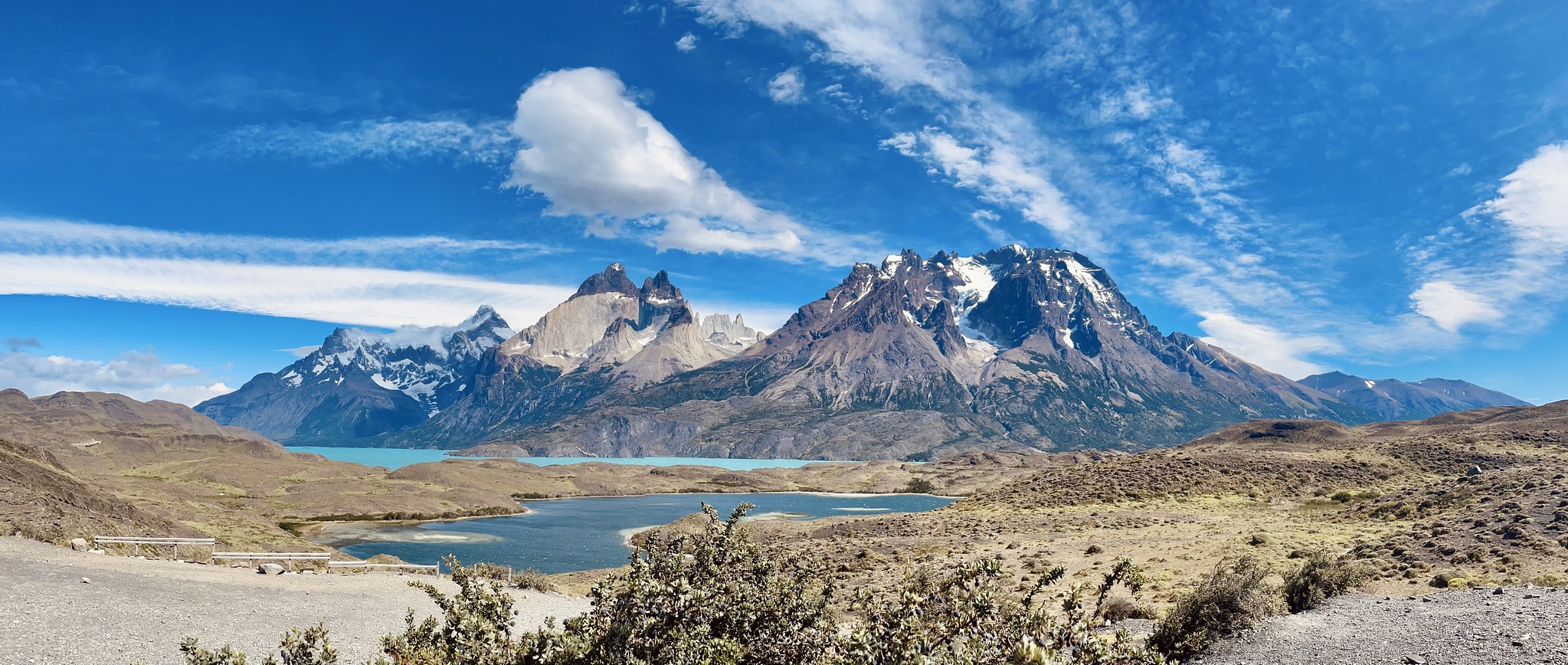Marvelling at the Blue Towers
Puerto Natales serves as the base for visiting the Torres del Paine National Park. The park’s iconic features are the three ‘blue towers’, ‘paine’ meaning ‘blue’ in an indigenous language.
Typical for the region, the weather can shift quickly. Though we were expecting high temperatures and a clear sky on the day of our trek, we started off with clouds and rain, with the towers not visible due to either fog or precipitation. This, while the night before, the day of our arrival, the weather was so gorgeous that locals were wearing flip flops, shorts, and shirts, while parading back and forth on the town’s promenade.
Puerto Natales is one of those towns which has internalised that global unified standard of what it means to be a hip tourist destination for the young, affluent, western backpacker; craft beer, good coffee, boutique restaurants, all in a kind of aspiration to serve the digital nomad.
Yet, though we struggled to find eateries catering to locals, we did not fail.
The journey in to the park, with all the required expenses, small and large, becomes a wealth transfer from the global north to the global south, if we can take the liberty to include Chile in the global south, similar to how visiting Machu Picchu is also an assault on your wallet.
But then, considering how curated the experience is, visiting the park does end up feeling a bit like it’s a Disneyland for hikers.
Technically, the mountains in Torres del Paine National Park are not part of the Andes, which is part of the reason why the greater region was part of a border dispute between Argentina and Chile, in the late 19th century.
By visiting the region, in a way, we were walking in the footsteps of Thomas Holdich, geographer and president of the Royal Geographic Society, who walked the border between the two countries a good 100 years ago.
The border between Chile and Argentina, in principle, was decided as being the watershed between the Atlantic and Pacific oceans. Rain falling on land draining into the Pacific meant the land was Chilean, land draining into the Atlantic belonged to Argentina.
Except, by the end of the 19th century, it became clear that the natural border between the two countries, the Andes, not quite divided the countries in exactly this way as the mountain range approaches the far side of the continent. So, as a consequence, Chile, at the end of the 19th century, staked a claim to the Straight of Magellan, and, with a slow buildup in the following years, there was a real risk of the two countries going to war over this territorial dispute in the far south.
But, public opinion rose against this conflict, incidentally mostly led by women and women’s organisations, and a considered neutral third party was called in to decide. First, the British embassy, then King Edward VII, and, finally, Thomas Holdich, by then known for having settled somewhat comparable border disputes in Asia.
Holdich walked the entire length of the border between the two countries, passing through many places where no man, it was thought, had gone before; an expedition of exploration.
As he traveled, Holdich studied the cultures of the two countries, and concluded that “Love of nature’s beauty seems to be inherent in the Chilean. Trees and flowers, clouds and sunsets, these things appeal to him just as imposing buildings, magnificent streets, miles of wharfage, and acres of whool-sheds appeal to the Argentine imagination.” At the time, Argentina was one of the richest countries in the world, with, at some point, perhaps even the highest GDP per capita.
So, Holdich adopted this as his criteria. When there was a choice, scenic landscapes went to the Chileans, more fertile land went to the Argentines.
Edward VII announced the results, the countries accepted the decision, both stated they had been fairly treated, and reason had triumphed. War was averted, peace had prevailed.
To commemorate the process, a statue was commissioned and erected in 1904, on the border between the two countries, on the road between Mendoza and Santiago, Christ the Redeemer of the Andes.
Except, the workers had, by accident, turned the orientation of the statue by 90 degrees and, instead of pointing south, Christ was pointing to Argentina, with his back to Chile.
Passions briefly flared, but a Chilean newspaperman calmed passions when writing that “The statue is placed as it should be. The people of Argentina need more watching over than the Chileans.”
Amazingly, placated, both countries buried their arms, reduced the size of their armies, turned barracks into schools, and converted battleships for commercial purposes, signing an agreement that a permanent arbitrator, the British government, would settle all disputes between the two countries in the future.
Praised as a victory for peace, Peru and Bolivia, a few years later, settled a similar border dispute by also bringing in the Royal Geographic Society, and also settled their conflict amicably.
The long walk of Holdich had made a real, tangible, and meaningful difference in the world.
And then, World War I.
Now, the continental deep south sees no conflict. Though talk of some kind of reparations for the small indigenous community that once lived here would not be out of order. Back in Ushuaia, in 2007, literally only 1 individual was still alive who descended from the indigenous population in the area, both countries having had a past of being quite careless with the original population of the continent.
For us, after a stunning hike up to the towers, and a perhaps even more stunning tour through the park, we settled down at the last Hope distillery, where, besides gin, they’re now waiting for their first whiskey to mature. I had a cocktail that tasted a bit like the spiced juice that pickles come in.
It was great.

